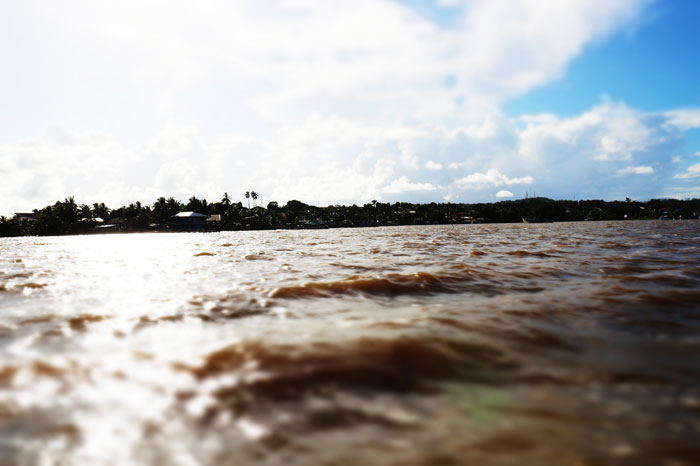
When Disaster Binds
Public health nurse Emma Mitchell never used to think of herself as a climate change researcher.
2x
Since 1993, ocean warming has doubled (2019 IPCC report)
But after taking more than 200 UVA students over the past half-dozen years to study abroad in Bluefields, Nicaragua—a town already experiencing effects of planetary warming, like many low-lying, coastal areas around the world—she’s more convinced than ever that nurses play a key role in preparing people and communities for the inevitable changes to come.
“It’s such a pressing issue,” said Mitchell, a women’s health and disparities scholar who also co-directs the School’s Global Initiatives. “Climate change is so intertwined with health and development that it’s become my area of focus.”
Nicaragua is no stranger to climate change-induced natural disaster. When Hurricane Joan hit Bluefields in 1988—a Category 4 storm with 150 mile-an-hour winds—it leveled the town, ripping off roofs, stripping trees, crunching docks, boats, and homes, and powering muddy, debris-laden waves through streets. Hundreds were killed, and tens of thousands were injured and left homeless. The storm took decades to recover from, and even today, physical scars run deep as people’s memories.
Though ferocious, Joan is hardly the only hurricane to pummel Bluefields. There was category 5 Hurricane Mitch, in 1998, which killed 11,000 people across Central America, and nearly 4,000 in Nicaragua alone. Hurricane Beta in 2005, then Dean and Felix in 2007, Ida in 2009, and Otto, in 2016. Hurricanes Nate and Harvey hit in 2017.
Then there are the quieter effects of climate change that are equally devastating. Wet seasons are wetter, and dry periods are even more parched. Established coffee plants—already fussy about moisture and temperature—these days rot at sea level, and replacement plants must be cultivated further inland, and at higher elevations, often taking years to produce a crop. Water-loving rice paddies that once grew along the shores of Pearl Lagoon, an hour to Bluefields’ north, today perish from encroaching salt water. And fishing—once Bluefields most common profession—is getting harder due to the migration of marine life in a warming ocean.
It’s precisely why Mitchell is driving a broader, cross-cultural discussion about disaster preparedness, and nursing’s leading role in it. And with funding from the Jefferson Trust, she’s determined to make the case that such planning is truly the foundation of a community’s resilience, and its ability to face the inevitable change to come that will happen in Nicaragua to Norway, Miami to the Marshall Islands, the Sundarbans to China’s Sichuan province.
“It’s quite literally a matter of time before the rest of the world experiences the impacts of climate change unique to their locations and vulnerabilities,” said Mitchell, “and nurses are critical to our communities being prepared.”
+
“It’s quite literally a matter of time before the rest of the world experiences the impacts of climate change unique to their locations and vulnerabilities. And nurses are critical to our communities being prepared.”
Emma Mitchell, assistant professor, women's health scholar, and Global Initiatives' co-director
Mitchell and husband Michelet McLean, who’s from Nicaragua and teaches medical Spanish courses at the nursing school, have a deep and abiding affection for Bluefields, a small town located on the southeastern part of its Caribbean coast. It’s where McLean opened a practice after graduating from law school. It’s where Mitchell completed her dissertation on Nicaraguan women’s health barriers. It’s where they know the people, the streets, and the customs, and are working to build capacity with local universities, health systems, and non-profits.
Bluefields is also where they’ve watched climate change increasingly alter the lives of the town’s 50,000 or so residents, a unique amalgam of Latino, black, Caribbean, and indigenous people, who today are struggling to live off of the ocean’s bounty as they’ve done for generations.
Warmer ocean water means marine creatures today seek deeper, cooler depths much further off the coast. Canoes, small fishing vessels, and hand nets flung into the surf have given way to the need for larger, stronger, powerful motor boats capable of going miles, rather than meters. It’s a sea change in a region where many families’ economies are already on the precipice, and where positive opportunities for young people are often in short supply.
For fishermen here—who catch prawns, spiny lobster, and fish like snook, sardines, and grouper—no motorboat means no income. And that’s forced many to seek work elsewhere, including in cities like Managua, nine hours by bus to the west, on cruise ships, or even abroad, in neighboring Costa Rica, Panama, or Belize. Today, remittances are the second-most common source of income in Bluefields, Mitchell said.
Climate change may seem slow, she warns, but its effects are fierce and myriad. And the cascade of impact is increasingly being felt among Bluefields’ young, who, due to familial migration, few job opportunities, and little supervision are increasingly at risk of getting snared in a growing drug trade or the sex trafficking it has heightened.
“You don’t believe that climate change could carry you to drug trafficking, but that line is there,” explained Gorman Jaenschtke, who heads a Bluefields’ youth empowerment program, and has visited UVA to speak about climate change’s unanticipated effects. “When you have one problem, it goes to another, and another, and another. And it increases.”
It’s precisely why Mitchell is preparing and positioning American and Nicaraguan nurses to lead communities through the unexpected social and health consequences of a warming climate. That she and her students do this across borders, language, experience, from vastly different backgrounds and cultures, not to mention across thousands of miles of land and water, is nothing short of remarkable.
+
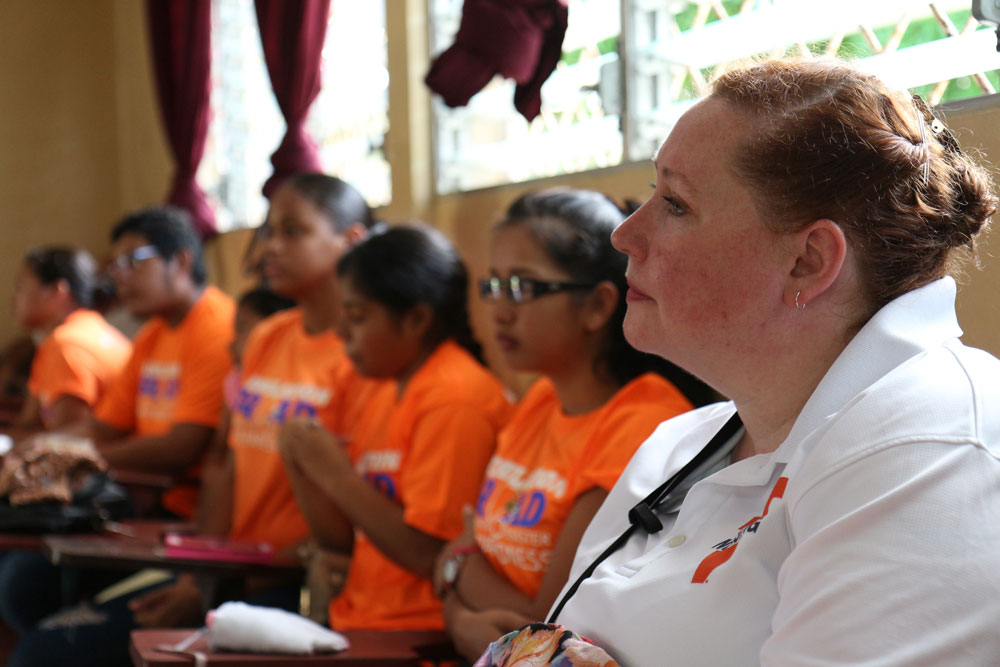
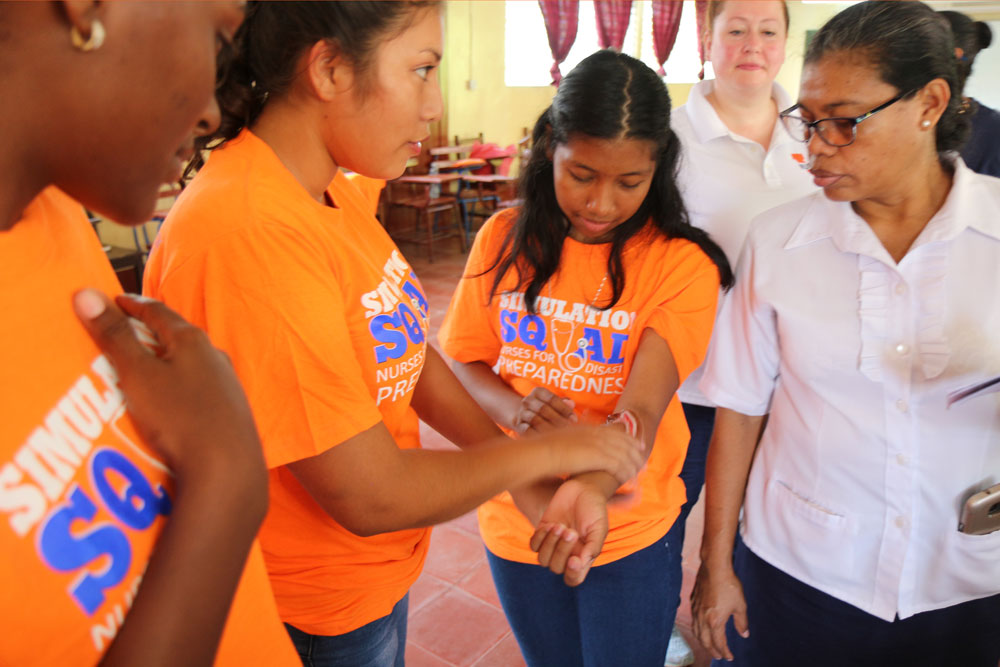
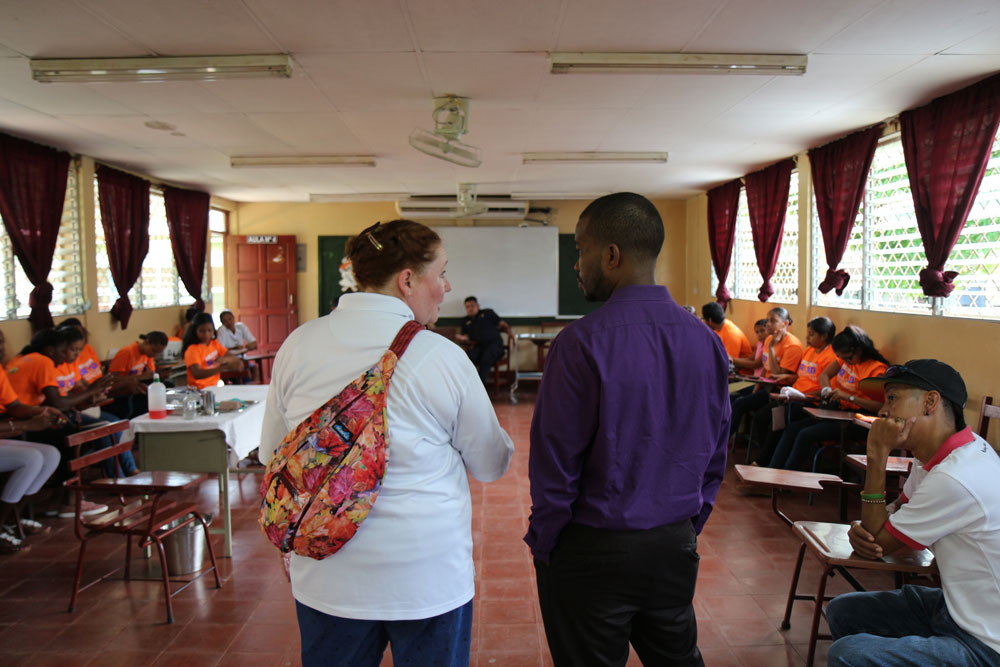
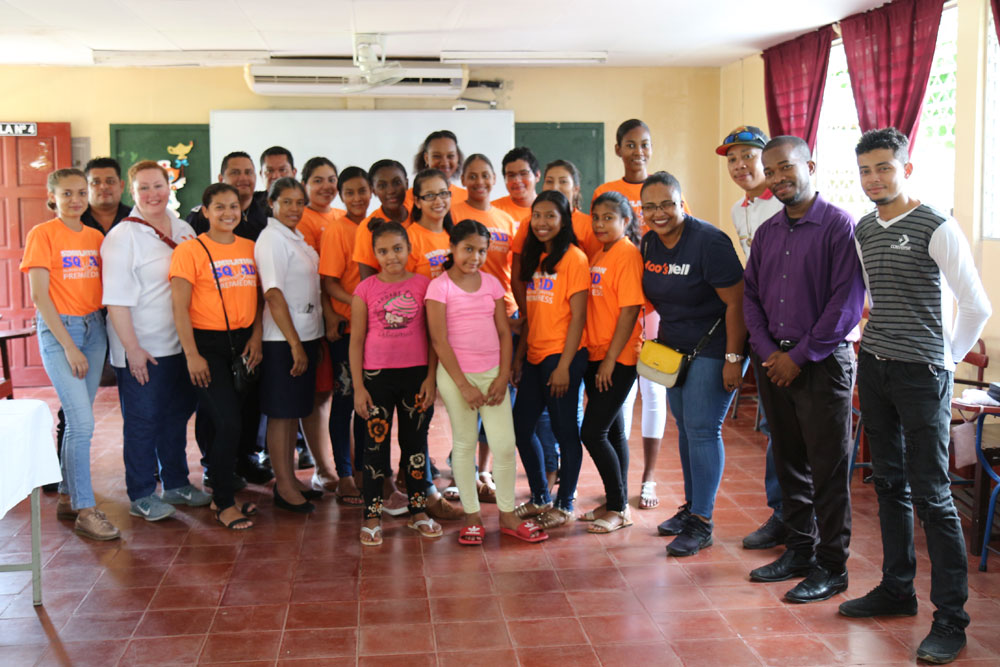
Mitchell’s project really began, though, with a simple request from the Bluefields Indian and Caribbean University (affectionately called BICU, pronounced “BEE-coo”), home to the region’s only school of nursing which draws hundreds of students from up and down the Caribbean coast. BICU nurse leaders knew that the growing threat of disaster likely meant that a foreign aid response would require Nicaraguan nurses, among others, to partner closely with non-Spanish speakers.
“We thought it’d be a good beginning place for UVA students who don’t necessarily speak Spanish to partner with BICU students to learn about what a disaster response process might look like,” explained Mitchell.
So starting in 2015, Mitchell and McLean invited small groups of nursing students to travel to Bluefields where they could experience and observe how a developing nation’s coastal community dealt with and prepared for climate change. UVA students learned about the area’s health struggles and environmental challenges, efforts to improve them, and nurses’ roles therein. They heard from leaders of youth empowerment programs, from farmers who were reinventing their agriculture, even learned about Bluefields’ novel murals project that uses oversized art to broadcast messages about violence prevention, education, and recycling. They learned about natural medicine from Bluefields pharmacists, met with teens enrolled in a substance abuse program, discussed climate change-induced trauma with a local psychologist, and chatted with expectant mothers at a residential clinic prior to their deliveries.
2x
Since 1982, marine heatwaves have doubled in frequency (2019 IPCC report)
As the BICU partnership deepened and evolved, though, Mitchell began to focus on learning scenarios through simulation—scripted situations acted out by students, health professionals, and others—that encouraged critical thinking, reaction, and planning against the backdrop of disaster. Such activities, she reasoned, would strengthen UVA and BICU nurses’ skills, and further position them as community leaders.
“People go to [these nurses] for resources,” Mitchell said, “for questions and answers, but through this project we’re working to have them really be those proactive leaders that assess how disaster plans might work in their communities.”
Using stories and insight from BICU students and faculty, Mitchell created scripts with details based on real climate-change induced disasters from Nicaragua, and around the world. The simulations offered a safe space for UVA and BICU nurses to understand disaster response, practice their triage skills, and think creatively, and collaboratively debrief about what went well, and what response areas they might strengthen. The activities also offered students broader context, too, on disaster prevention, communication in low-resource settings, and the development, use, and refinement of contingency plans that disaster-prone areas like Bluefields—and, increasingly the United States—must keep top of mind, particularly in coastal areas.
In many cases, Mitchell’s disaster simulations are novel because they involve few medical supplies, no power, and no potable water. In others, they capitalize on the chaos and confusion that large-scale disaster can bring, and include multiple concurrent injuries from building collapses, chemical burns, and traffic accidents. In still other scenarios, Mitchell’s simulations involve patients in acute psychological distress who disrupt triage with belligerence.
Sometimes, Mitchell throws in unique cultural wrinkles, like the scenario in which students encounter a woman who declines medical care for a gravely injured family member, asking instead for a traditional healer. The twist—based on the experiences of BICU students and faculty—is there to drive home a point.
“Many times we say, ‘I’m a healthcare provider, I understand the scientific principles at play, and you have to do what I say,’” explained Diana Hodgson, BICU’s director of nursing, who visited UVA in fall 2019, “but it’s not like that. This simulation helps us understand the community, and when we understand them better we can help them, and they cooperate better with us, too. That’s being sensitive to their needs.”
For American students used to the promise of limitless supplies and equipment, the experience can be both jarring and profound.
20-30%
Since the 1980s, the oceans have taken 20-30% of all human-caused CO2 emissions, worsening acidification (2019 IPCC)
“As a student, it’s like, ‘Oh, this isn’t real, and in real life, it would be different,’” explained Deja Fuller (CNL `20), “but in the disaster simulation, it’s more true to form because, let’s say there’s an earthquake or a hurricane, you might not get supplies, or there are barriers that you can’t get a delivery of something. It really started the conversation of, in real life, things like this do happen, but here’s how you can manage it.”
Mitchell’s simulations have altered the structure and focus of nursing curricula at both institutions, too. Inspired BICU faculty now embed disaster-specific topics in courses from pathology and community health to pharmacology, and students there are required to create an original scenario for a disaster simulation, organize and, with peers, execute it.
At UVA, Mitchell’s community and global health students benefit from taking part in disaster simulations, study how climate change impacts community and public health, learn how community disaster plans are formed, and what they look like, and even develop a disaster plan tailored to their own family. More than 150 UVA undergraduate and graduate students have also benefitted from hearing from Mitchell and McLean’s Bluefields colleagues, including Hodgson, Jaenstchke, Joel Campbell, who runs a human right and climate change organization in Bluefields, and psychologist Kathy Willis—exercises and perspectives, said Jaenstchke, that help UVA students “learn to go beyond equipment.”
“The partnership with UVA is like a light, to guide us all into a better way of living,” Jaenstchke added. “We learn from them, they learn from us: it’s a circle, and everybody wins.”
